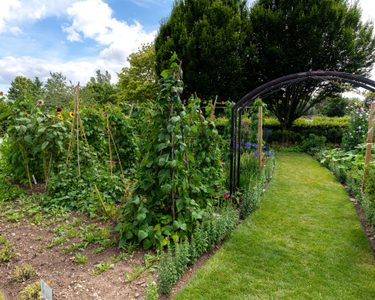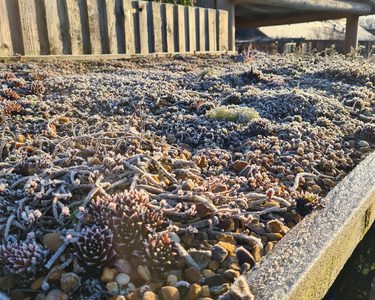How to reduce high temperatures in your garden - right now!

Temperatures in Europe have increased by more than twice the global average over the past three decades, faster than any other continent, suggests data from Copernicus, the EU’s climate monitoring service.
Figures from The Woodland Trust’s Nature’s Calendar show 2022 also experienced one of the earliest springs. Elder budburst was recorded up to a month earlier and flowered two weeks before its usual date, and lawns were cut on average 19 days earlier.
But planting trees and climbers, and greening surfaces can all bring the temperatures down in your garden, providing shade and shelter for you and your garden wildlife.
Here's seven things to try:
1. Plant a tree
Not only do trees provide dappled shade but they also release water vapour through their leaves, which cools the surrounding area and reflects solar radiation. If you have the space for a tree, go for ones that have light-coloured leaves and a denser canopy such as English Maple, Hornbeam or Liquidambar. Trees are best panted October to March.
2. Green vertical surfaces
Leafy climbing plants, whether ornamental or edible, clothe fences and walls in greenery – which can cool the garden as the plants transpire. Ivy is good at reducing humidity and can cool surface temperatures by as much as 7°C. And, of course, they’ll all provide a chill-out area for insects and birds. Plant bare root shrubs and climbers in winter.
3. Soften hard surfaces
The urban heat island effect, which sees built-up areas reach significantly higher temperatures than the countryside, is caused by the prevalence of flat, impermeable surfaces and materials such as concrete, asphalt and glass. Think about replacing patios or decking for lawns and veg beds as this immediately allows heat and water to be absorbed more efficiently. Drives made from permeable materials will retain less heat, or you could try a growing grid, which allows plants to grow in between the paving blocks.
4. Grow a green roof
Create a sky garden on a flat roof to help cool the surrounding environment (see our green roof at Garden Organic below). In spring, plant with sedums, grasses and wildflowers, which will all grow happily in shallow soil on a supported shed roof or garden office.
5. Sow a lawn
Grasslands and meadows, and even small lawns act as solar panels, sending water into the atmosphere as they transpire and bringing the temperature down by as much as 15°C. Add red clover to your lawn and its long tap roots can help draw up moisture and increase drought resilience. Plan the space, prepare the ground - and sow from mid-spring.
6. Choose reflective plants
Think about planting schemes that reflect sunlight. Plan a flower scheme that uses paler colours and white petals, that will naturally cool a garden or go for silver or grey-leaved perennials such as globe artichoke, eryngium or helichrysum.
7. Mulch your soil
Add a layer of well-rotted compost or bark to your beds and borders and it will reduce the amount of moisture that’s lost through evaporation, and keep the soil underneath at a steadier, cooler temperature.
